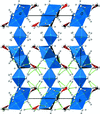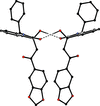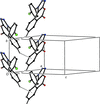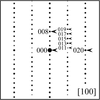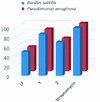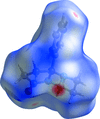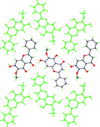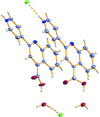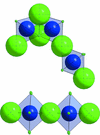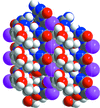issue contents
May 2020 issue

Cover illustration: The crystal structure is reported of a three-dimensional anionic CuICN network with noncoordinated protonated N-methylethanolamine cations providing charge neutrality. Pairs of cuprophilic Cu atoms are bridged by ![[mu]](/logos/entities/mu_rmgif.gif) 3-cyanide groups which link these units into 43 spirals along the c axis, and these are linked together by other cyanide groups. On heating the compound to 280 °C, a CuCN residue is formed, while further heating leaves a residue of elemental copper, isolated as the oxide. See Koenigsmann, Rachid, Sheedy & Corfield [Acta Cryst. (2020), C76, 405-411].
3-cyanide groups which link these units into 43 spirals along the c axis, and these are linked together by other cyanide groups. On heating the compound to 280 °C, a CuCN residue is formed, while further heating leaves a residue of elemental copper, isolated as the oxide. See Koenigsmann, Rachid, Sheedy & Corfield [Acta Cryst. (2020), C76, 405-411].
research papers










 access
access





 access
access

 access
access

 access
access













 access
access

 access
access

 access
access

 journal menu
journal menu


















